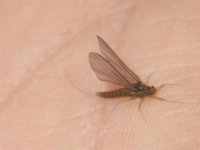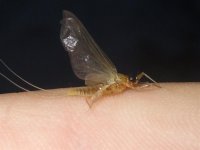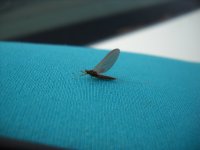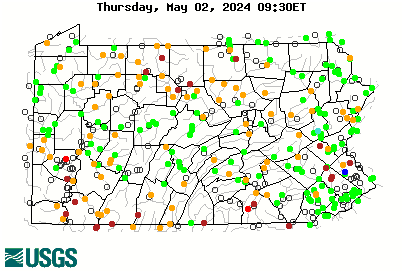1st 2. Plain wing, small hind wing, 2 tails. Assuming I got those traits right based on the picture, it makes it very likely to be in the Baetis genus. I can't go down to species, they all look the same to my eye, and we call them all BWO's.
3rd one, plain wing, two tails with large hind wing. NOT a baetis. I'm gonna go Epeorus genus. Most likely Vitreous, which go by a lot of common names, including sulphurs (though not among the big 2 species which are most known as sulphers), little maryatt, light cahill, pink lady, etc. Very large color variety in these guys. Could also be a quill gordon (also in Epeorus genus).
thought BWO wings were speckled?
There are a billion species, and several familes which we call BWO's. The Baetis genus is most common, and does not have a speckled wing. Drunella's also have a plain wing. Calibaetis have a speckled wing, and are sometimes called BWO's.
However, Drunella's have a large hind wing and 3 tails. The combination of small hind wings, un-mottled fore wings, and 2 tails is fairly rare but the entire Baetis genus fits the bill, and its a widespread genus.
maccaffertium - larger golden two tailed mayfly
Maccaffertium has a large hind wing, so only the last one could be. But they also have mottled wings, and this wing looks pretty plain to me. So I don't think there's a maccaffertium here.








